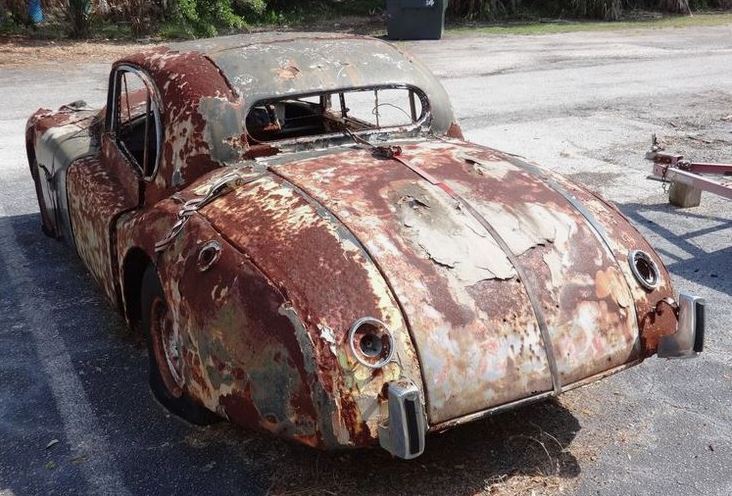In recent years, the market for classic car restorations has experienced an impressive resurgence. Enthusiasts, collectors, and even first-time buyers are increasingly drawn to vintage vehicles for their craftsmanship, heritage, and unique character. Whether it’s the elegant lines of a 1965 Ford Mustang or the charm of a Volkswagen Beetle from the ’70s, classic cars are making a notable comeback. This growing interest is shaping a robust industry focused on preserving automotive history—while also catering to modern preferences.
While many are passionate about bringing old classics back to life, others are finding practical value in recycling vehicles that are beyond repair. Services like cash for scrap cars Brisbane offer a streamlined solution for disposing of irreparable vehicles, often providing the initial capital or garage space needed for restoration projects. These services play an essential role in keeping the ecosystem of classic car restoration alive and sustainable.
Table of Contents
Why Classic Cars Are Back in Vogue
Classic cars evoke a sense of nostalgia and individuality that modern vehicles often lack. With car designs becoming more standardized, many people are rediscovering the beauty and personality of older models. Owning a classic car is not just about transportation—it’s about making a statement and preserving a piece of automotive history.
Beyond aesthetics, vintage vehicles also offer mechanical simplicity. Many classic models are easier to work on than their modern counterparts, making them attractive to DIY mechanics and hobbyists. This has led to a rise in restoration shops, online communities, and events dedicated to classic car enthusiasts.
Economic and Investment Value
Another driving force behind the boom in classic car restorations is their potential as appreciating assets. Unlike most modern cars that depreciate rapidly, well-maintained or professionally restored classics can increase in value over time. This has caught the attention of investors who view classic cars as an alternative asset class.
Restoring a car can be a rewarding investment—financially and emotionally. It’s not uncommon for enthusiasts to purchase a neglected vehicle, invest time and resources in a high-quality restoration, and eventually sell it at a profit. However, this requires expertise, patience, and a strong understanding of the market.
Technological Advancements in Restoration
Today’s restorers benefit from modern technology and tools that streamline the process. From 3D scanning and printing of obsolete parts to advanced paint-matching systems, innovations have made it easier to restore vehicles to their original glory. There’s also a growing trend toward “restomods”—classic cars updated with modern technology, such as fuel-injection systems, air conditioning, and infotainment options.
This blending of old and new not only makes classic cars more functional for everyday use but also broadens their appeal to younger generations. It’s a perfect example of how the restoration industry is adapting to current tastes while respecting the heritage of these iconic vehicles.
Community and Culture
Classic car restoration is more than just a hobby—it’s a lifestyle for many. Car shows, auctions, and restoration competitions create a strong sense of community among enthusiasts. These events are not only opportunities to showcase craftsmanship but also a way to pass down knowledge and inspire future restorers.
Online forums, YouTube channels, and social media platforms have also contributed to this cultural revival. They offer tutorials, reviews, and a space for discussions, helping both beginners and seasoned restorers navigate challenges and share successes.
Sustainability and Environmental Responsibility
Interestingly, restoring a classic car can be a more sustainable choice than manufacturing a new one. By reusing existing materials and reducing the demand for new vehicle production, restorations contribute to a circular economy. Many restoration projects now incorporate eco-friendly practices, including low-VOC paints and recycling of old parts.
This environmental angle resonates with a growing number of consumers who are seeking greener lifestyle choices. In parallel, services like cash for unwanted cars Ipswich help responsibly dispose of vehicles that are no longer viable, ensuring parts and materials are recycled efficiently rather than ending up in landfills.
Challenges in the Classic Car Restoration Market
Despite its growing popularity, classic car restoration is not without challenges. The availability of original parts can be limited, and the cost of high-quality materials and skilled labor continues to rise. Moreover, restoration is a time-consuming process that demands a high level of craftsmanship and attention to detail.
There’s also the legal aspect—restored cars must comply with safety and emissions regulations, which can vary by region. Navigating these rules can be tricky, especially for international buyers or those restoring rare models.
Final Thoughts
The classic car restoration market is thriving, driven by a blend of nostalgia, investment potential, and the desire to preserve automotive heritage. It’s an industry that bridges generations, attracts a wide demographic, and contributes to sustainable practices.
As interest continues to grow, so does the support infrastructure—from professional restorers and parts suppliers to digital communities and eco-conscious services. Whether you’re restoring a classic car for personal enjoyment or profit, the journey promises to be as rewarding as the final result.
For those ready to part with unrepairable vehicles and make space for new projects, services such as cash for scrap cars Brisbane offer a practical first step. In doing so, they help fuel a movement that honors the past while embracing the future of motoring.



